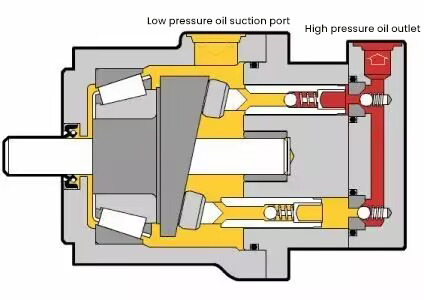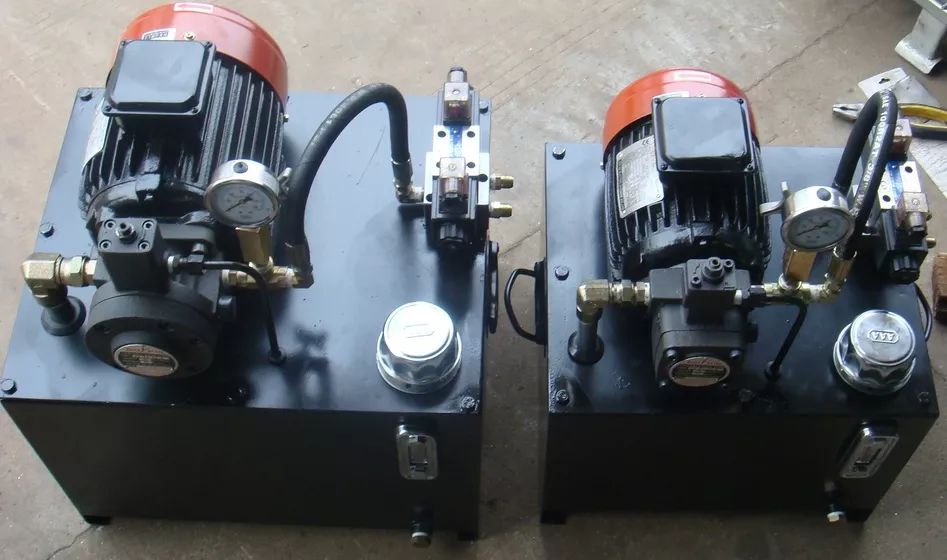Reasons and Elimination Methods of Non-action of Actuating Components and Creeping Mechanism in Hydraulic System
The failure phenomena that often occur in the actuators of the hydraulic system include: the system pressure is normal, the actuators do not move, the actuators move too slowly, and the mechanism crawls.
These types of faults are closely related to abnormal flow, and the cause of the fault can often be found and eliminated by the working parameter of flow. This paper analyzes in detail the causes and elimination methods of three failure phenomena of hydraulic system actuators.

The characteristics of hydraulic system failure:
1. Concealment: It occurs inside the system and is difficult to observe directly;
2. Interlacing: Symptoms and causes overlap, one symptom may be caused by multiple reasons, and one fault source may cause multiple symptoms;
3. Randomness: voltage, ambient temperature, changes in work tasks, randomness of pollution intrusion;
4. Difference: The design, processing material and application environment are different, and the wear and deterioration speed of hydraulic components is very different.
Causes of hydraulic system failure:
1. Design reasons
Due to reasons such as technology, workmanship and experience, the hydraulic system is not perfect, and the selected hydraulic components may not be the most suitable. Therefore, when analyzing the cause of the failure, first consider whether there is a problem in the design.
2. Manufacturing reasons
Improper operation during the installation and commissioning of the whole set of equipment may lead to unexpected failures.
3. Reasons for use
Improper use and maintenance of the hydraulic system not only increases the frequency of equipment failures. And it will reduce the service life of the equipment.
4. Reason for maintenance
During the maintenance of the system, due to over-disassembly, non-standard operation, arbitrary adjustment, and mismatched accessories, etc., minor faults may turn into major faults.

Symptom 1: The action of the actuator is too slow
Reason 1: The internal leakage is serious.
a. The seal is seriously damaged.
Elimination method: replace the seal.
b. The viscosity of the oil is too low.
Elimination method: replace the hydraulic oil with suitable viscosity.
c. The oil temperature is too high.
Elimination method: check the cause and eliminate it.
Reason 2: The external load is too large.
a. The design is wrong, and the selected pressure is too low.
Elimination method: replace the components after accounting, and increase the working pressure.
b. Mistakes in workmanship and use cause the external load to be larger than the predetermined value.
Elimination method: Use according to the specified value of the equipment.
Reason 3: "Don't work hard" when the piston moves.
1) The machining accuracy is poor, and the taper and roundness of the cylinder bore are out of tolerance.
a. Piston rod and piston are not coaxial.
Elimination method: Correct the coaxiality of the two.
b. The piston rod is bent in full length or in part.
Elimination method: straighten the piston rod.
c. Poor straightness of the inner hole of the hydraulic cylinder (drum taper, etc.).
Elimination method: boring and grinding repair, reconfiguring the piston.
d. Corrosion and roughening in the cylinder.
Elimination method: repair rust and burrs for minor cases, and boring and grinding for serious cases.
2) The assembly quality is poor.
a. Coaxiality difference between piston, piston rod and cylinder head.
Elimination method: Reassemble as required.
b. The parallelism between the hydraulic cylinder and the worktable is poor.
Elimination method: Reassemble as required.
c. The gap between the piston rod and the guide sleeve is too small.
Elimination method: Check the fit clearance, repair and scrape the guide bushing to achieve the required fit clearance.
3) The sealing ring of the end cover of the hydraulic cylinder is too tight or too loose.
Elimination method: adjust the sealing ring so that it is not tight or loose, and ensure that the piston rod can be pulled back and forth smoothly by hand without leakage.
4) The nuts at both ends of the double-piston rods are too tight, resulting in poor coaxiality.
Elimination method: The nut is not easy to be tightened too tightly, and it is generally sufficient to tighten it by hand to keep the piston rod in a natural state.
Reason 4: Dirt enters the sliding part.
a. The oil is too dirty.
Elimination method: filter or replace the oil.
b. The dust ring is damaged.
Elimination method: replace the dust ring.
c. Not cleaned or brought in dirt during assembly.
Elimination method: disassemble and clean, pay attention to cleaning when assembling.
Reason 5: The speed of the piston drops sharply at the end stroke.
a. The throttle port of the buffer regulating valve is adjusted too small, and when entering the buffer stroke, the piston may stop or the speed will drop sharply.
Elimination method: The opening degree of the buffer throttle valve should be adjusted appropriately, and it can play a buffer role.
b. The diameter of the orifice in the fixed buffer device is too small.
Elimination method: Properly increase the throttle diameter.
c. The gap between the fixed buffer throttle ring on the cylinder head and the buffer plunger is too small.
Elimination method: appropriately increase the gap.

Performance 2: Institutional crawling
When the movement speed of the hydraulic cylinder is below 5mm/s, try to prevent the phenomenon of crawling.
Reason 1: New hydraulic cylinders, hydraulic cylinders after repairs or hydraulic cylinders that have been shut down for too long, there is air in the cylinders or the exhaust in the hydraulic cylinder pipelines is not exhausted.
Elimination method: reciprocate with no load and large stroke until the air is exhausted.
Reason 2: Negative pressure is formed inside the oil cylinder, and air is sucked in from the outside.
Elimination method: first seal the joint surface and joints with grease, if the vacuum situation improves, tighten the fastening screws and joints.
Reason 3: The volume of the pipeline from the oil cylinder to the reversing valve is much larger than the internal volume of the hydraulic cylinder. When the hydraulic cylinder is working, the oil in this pipeline is not exhausted, so it is difficult to discharge the air.
Elimination method: You can add an exhaust valve at the highest point in the pipeline near the hydraulic cylinder, unscrew the exhaust valve, the piston rod will move several times in the full stroke, and then close the exhaust valve after exhausting the air.
Reason 4: The pump sucks in air.
a. A certain amount of air is dissolved in the oil, and air bubbles are generated during the working process.
Elimination method: Add a partition in the oil tank, suck the return oil through the partition to defoam, and then inhale the defoamer in the oil.
b. The oil return vortex strongly generates foam.
Elimination method: The oil suction pipe and the oil return pipe should be separated by a certain distance, and the oil return pipe should be inserted below the oil surface.
c. There is air in the pipeline or in the pump casing.
Elimination method: Carry out no-load operation to remove air.
d. The depth of the oil suction pipe immersed in the oil surface is not enough.
Elimination method: lengthen the oil suction pipe, fill the oil tank with oil to raise the liquid level.
